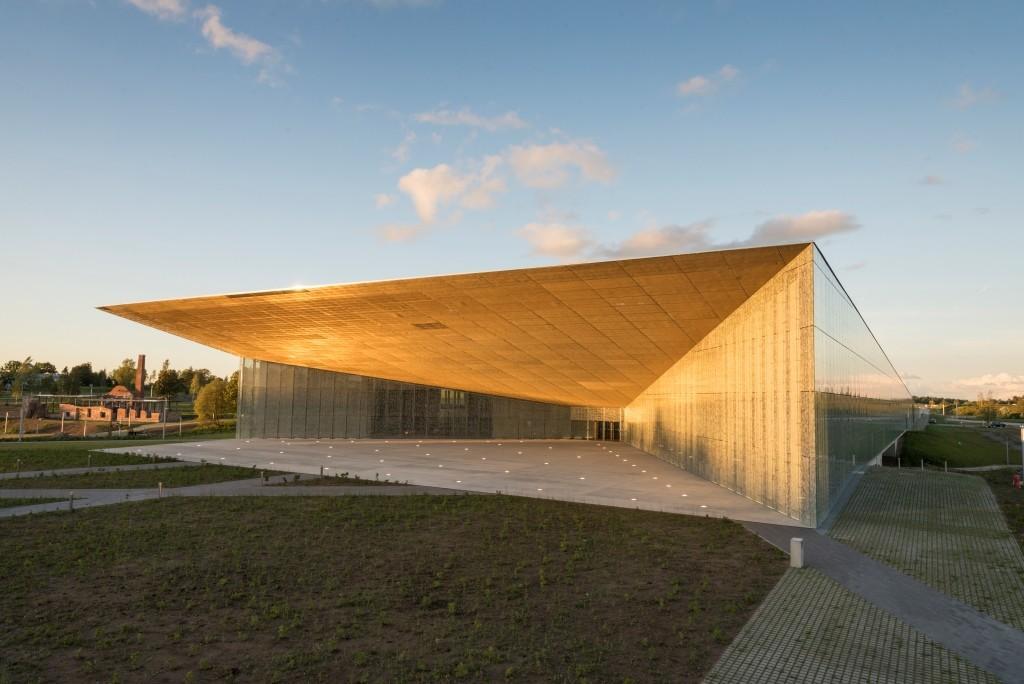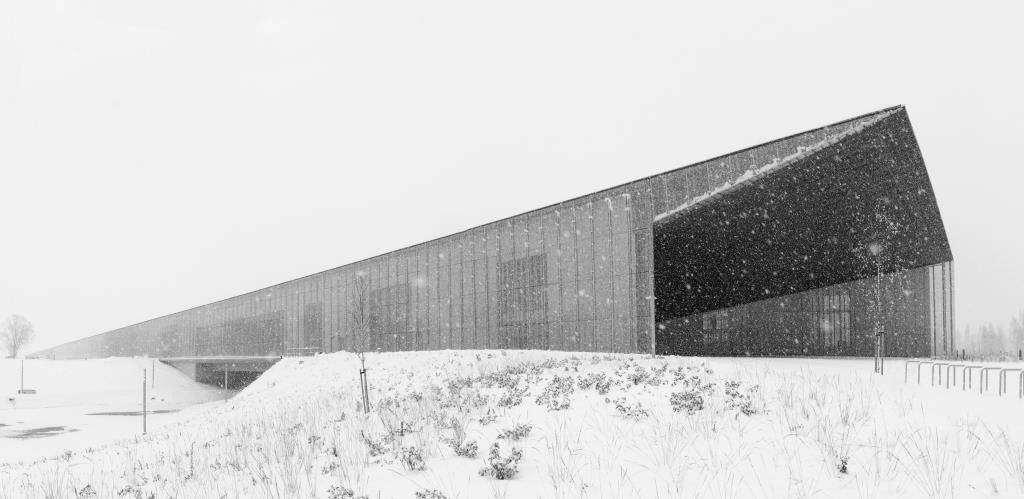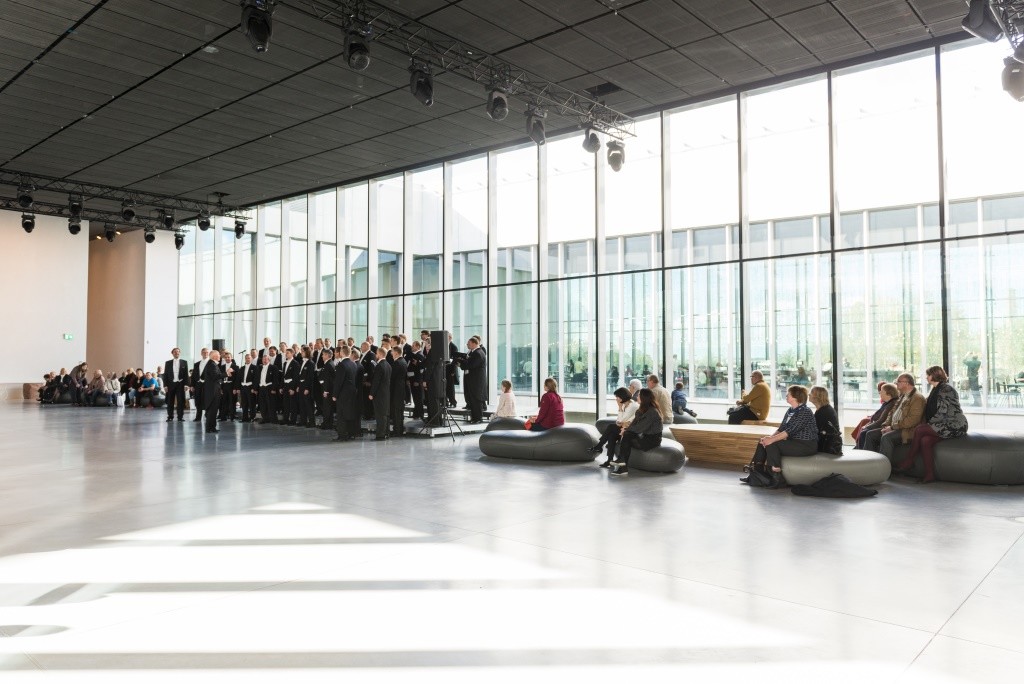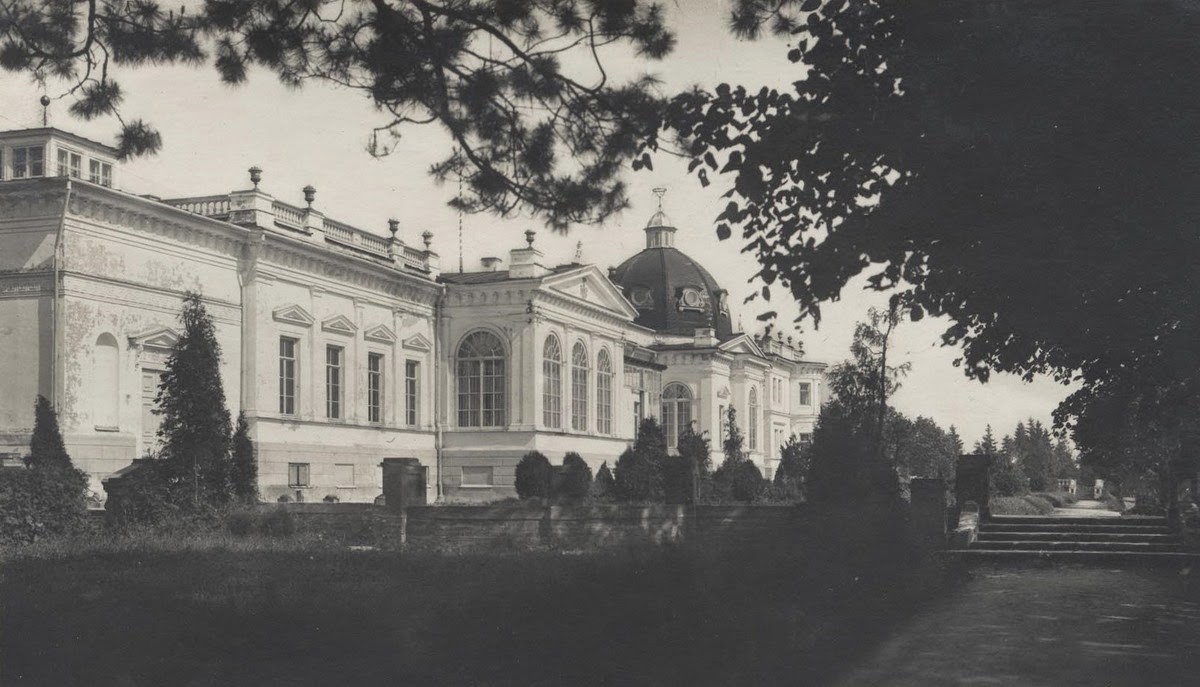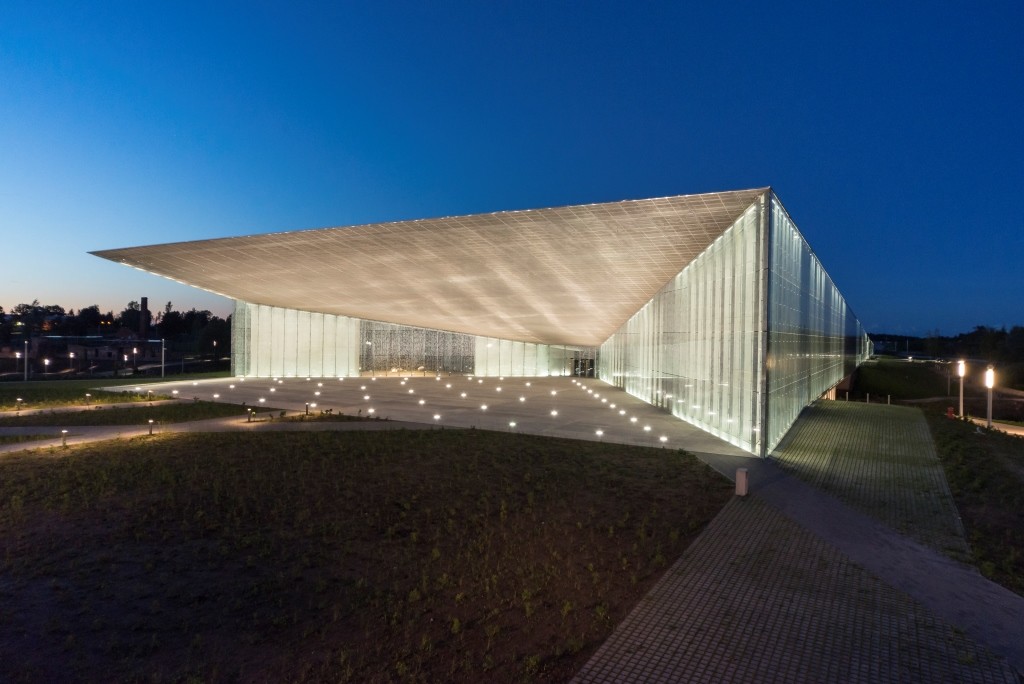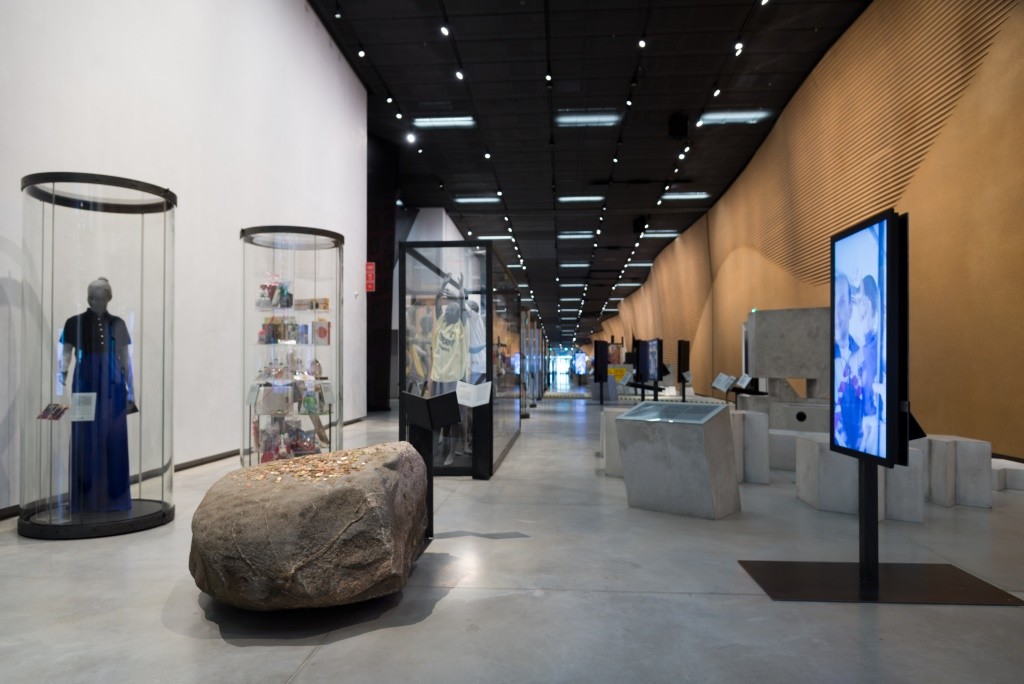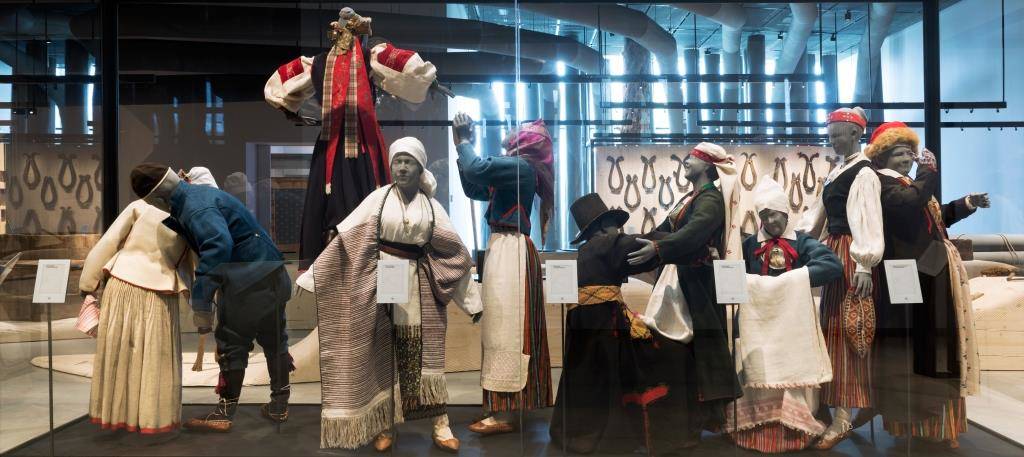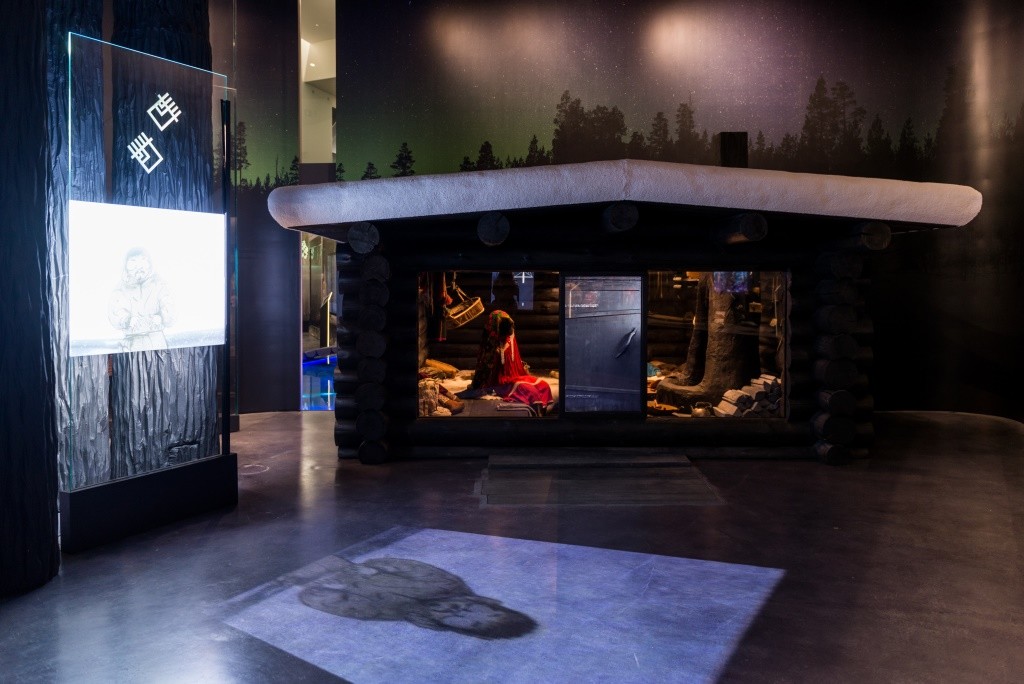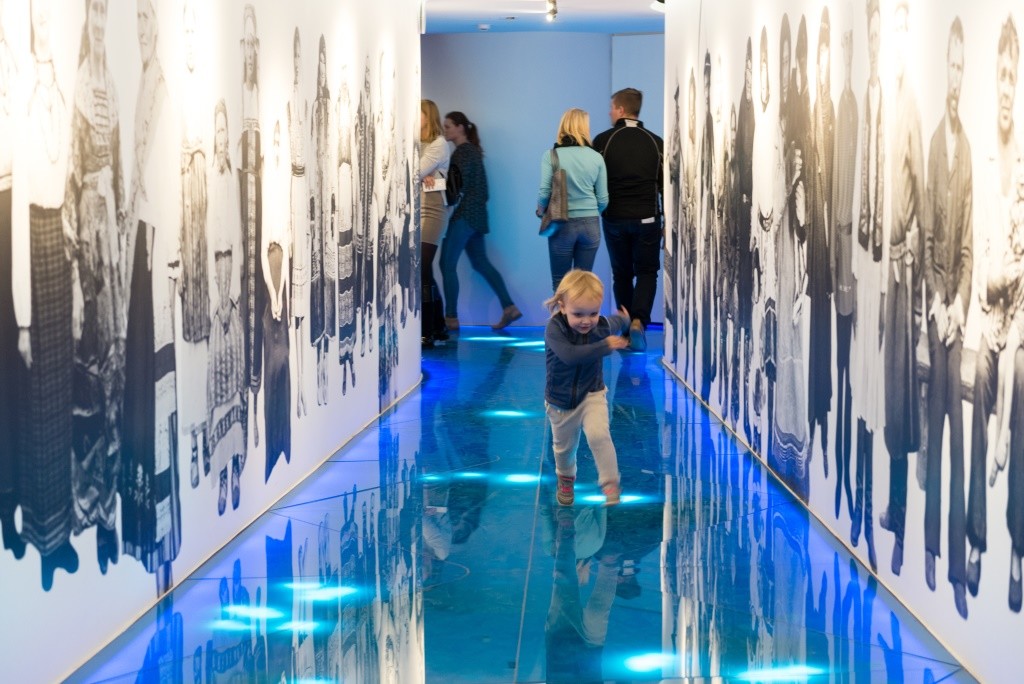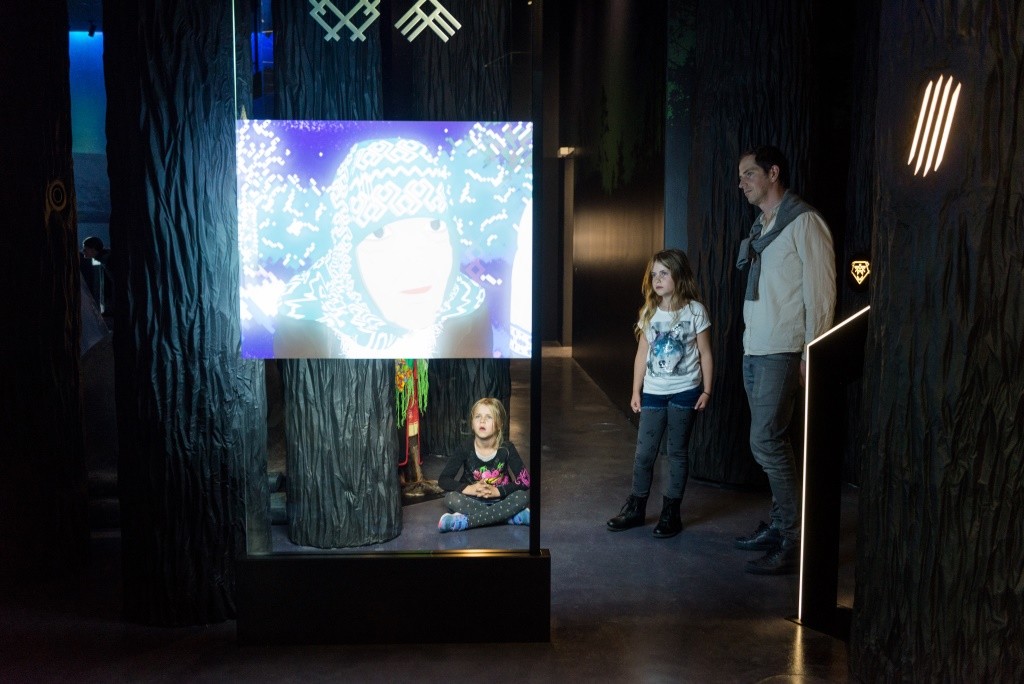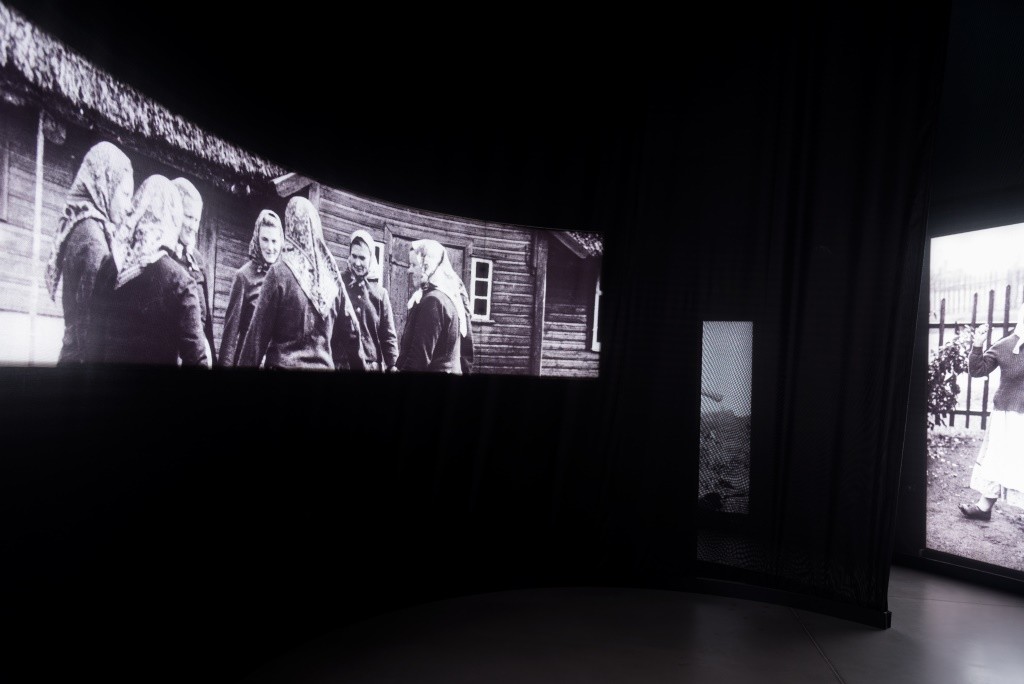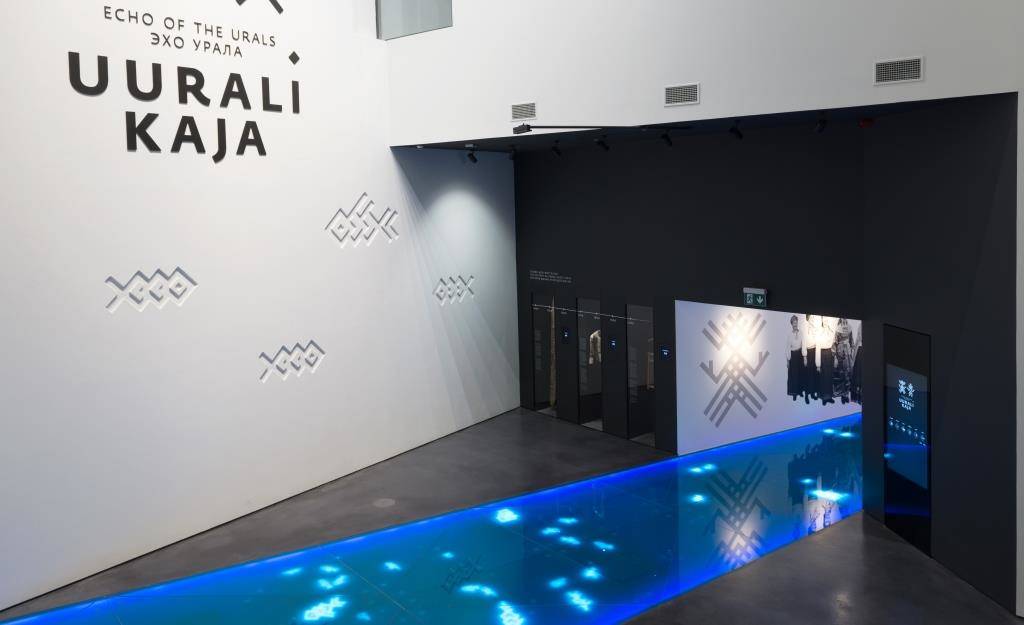The state-of-the-art Estonian National Museum, built on a former runway, was designed to represent the country’s emerging history.
In the last 26 years, Estonia has undertaken many huge projects – completed a massive national library and built new large premises for universities and a splendid museum of modern art. The latest assignment – the Estonian National Museum in Tartu – is the most enormous of them all, and ready for the centenary celebration.
The huge museum, which has almost 34,000 square metres (over 364,000 square feet) of space, is the largest and most expensive project Estonia has undertaken. It was designed by Paris-based architecture firm DGT and built at a total construction cost of €75 million. The architects have said the design, a massive glass and concrete wedge rising up from the former runway, represents the country’s emerging history.
“It shows that when we get off the ground, we start to fly for freedom,” jokes the head of the museum’s public relations, Kaarel Tarand, in an interview with Estonian World.
Visitor numbers exceeding expectations
Built on a former Soviet airfield on the outskirts of Tartu, the second largest city of Estonia, the museum took ten years to complete and was opened on 1 October 2016. So far it has had more than 100,000 visitors – something that has certainly exceeded expectations, according to Tarand. On top of that, 34,000 people have participated in various conferences, seminars and functions – the museum doubles as a modern event venue.
“I think we have managed to give a positive experience to everyone,” he said. “There have been a lot of opinions and most of them have been very positive. For most of the people, it is their first visit and they do not know what to expect. So their first impression usually goes beyond expectation – there is much more to see than anticipated. Only very few people have commented negatively.”
Alongside the two permanent exhibitions there are also a theatre, a conference room and a cinema. There will also be temporary exhibitions taking place this year as well as conferences and concerts. Every Wednesday, the museum hosts a jazz club in the evening.
Long history
The first Estonian National Museum was founded in 1909, devoted to well-known folklorist Jakob Hurt’s heritage, and operated as a private museum. It was opened in Tartu and dedicated to preserving Estonian ethnography and folklore. The original items shown in the museum were collected in the second half of the 19th century.
In 1922, the museum moved to the Raadi Manor which stood in the same area that the Estonian National Museum now stands on, but the building was later destroyed in the Second World War. The land around the museum was used as an airfield by the Estonian National Air Force in the 1920s and 30s. It was then later used for the same purpose by the Soviets after they occupied Estonia in the 1940s.
The Soviets were not interested in restoring something that would remind Estonians of their independence, so the museum was not rebuilt. The airfield became a secret Soviet bomber base and the former museum’s artefacts were stored in various buildings, such as churches, around the city. When Estonia regained independence in 1991, it had the chance to re-establish its national museum.
International architects
The sleek and technology-rich museum was designed by Dan Dorell, Lina Ghotmeh and Tsuyoshi Tane – the architects who form DGT. Their design was internationally striking enough to win the AFEX (French Architects abroad) Grand Prix award, which was awarded at the opening ceremony of the Venice Biennale in May 2016.
Ghotmeh told Estonian World that it was “amazing” to see the museum finally finished and ready to open. She says that the architects worked very hard to make a museum for Estonians.
“It is an open space where Estonians can celebrate their culture. There was a big question for us – how is this building Estonian? And we tried to think about the tradition of making troi, a traditional garment with the eight-pointed star which reflects on the landscape and national flower, and we put it on the façade (of the museum),” Ghotmeh explains.
Internally, the museum was designed by Estonians, however – by Pille Lausmäe Interior Architects.
Finno-Ugric peoples and Estonians
Today the two permanent exhibitions show different sides of Estonia’s history. The first traces the culture and history of Finno-Ugric peoples – the largest exhibition of its kind – and the second focuses on the life and traditions of Estonians from the Stone Age to the present day.
Thousands of items are on display and hundreds of thousands more are hidden behind the scenes in storage. In total, 1.2 million items are stored at the museum.
Speaking about the differences between the two, Tarand says: “They are so different in their build up and ideology it is hard to compare them, but of course, the exhibition of the Finno-Ugric is much more emotional and easy to acknowledge for the children – and they like it. But the subject itself may not be so important for all Estonians, let’s say. For the locals, it is not so interesting compared to what we need to know about ourselves and Estonian history. Parts of the Estonian exhibition, let’s say, are a bit more demanding.”
Much of the emphasis is placed on interactivity, making use of cutting edge technology. The viewers are invited to dive into explanations, explore different maps, play games and enjoy animations.
While some visitors have complained about the ticket price, most agree that the visit is worth it – as there is so much to see.
One foreign guest told Estonian World that it was “the best museum” he had been to, praising its vast collection and world-class displays, while calling the building an “architectural marvel”. Another visitor said that with its facilities for guests and researchers, this was what a future museum should look and act like, proclaiming it “a true benchmark for national museums”.
Many visitors are especially impressed by the huge touchscreens in the exhibits.
The first Estonian flag and book on display
Important items on display include the first Estonian flag and the first book written in the Estonian language. Items have been sent to the museum from all over the world and donated by private individuals. “There are offers every day,” Tarand says. “But we are very selective.”
Tarand notes that the museum has also been good for businesses in Tartu and has had a “knock-on effect” increasing footfall in the other museums in town. “We have not taken their visitors – we have brought them new ones too,” Tarand asserts. International explorers make up the approximately 10% of the visitors and Finns have been the most enthusiastic.
“Now people are proud of the museum,” Tarand points out.
He emphasises that although the museum is successfully opened, more remains to be done. “The first year is an implementation period – in the summer, we will inaugurate a rotating exhibition of Estonian folk costumes; and although already established, our cultural events programme will get into full swing by autumn.”
“It will take another two to three years to develop the museum to its full potential – we don’t have a lack of ideas or inspiration here,” Tarand notes.
Anticipating the 100th birthday of Estonia
He says they are hoping to get most done by the time Estonia will celebrate its 100th anniversary. For example, the museum is planning to establish a dedicated theme park on the field surrounding the museum and plant a number of oak trees. The oak has always been the most sacred tree for Estonians and the museum was inspired by the Government Office of Estonia’s invitation to plant oaks or oak tree parks all across the country and dedicate them to the centenary of the Republic of Estonia.
“As an important Estonian cultural institution, we always celebrate the important occasions that hold significance for the country and its people, but certainly the programme on the centenary year will be more festive than usual,” Tarand adds.
He hopes the stylish building will also be used as a venue for many related events – both when Estonia hosts the European Union presidency in the second half of 2017 and during the centenary year in 2018.
“The Estonian National Museum is for the people and owned by the people, therefore, the best gift we can give to Estonians for the 100th birthday is to maintain an impeccable service and user-experience here,” Tarand says.
I
Images by Anu Ansu, Arp Karm, Berta Vosman (courtesy of the Estonian National Museum.)

